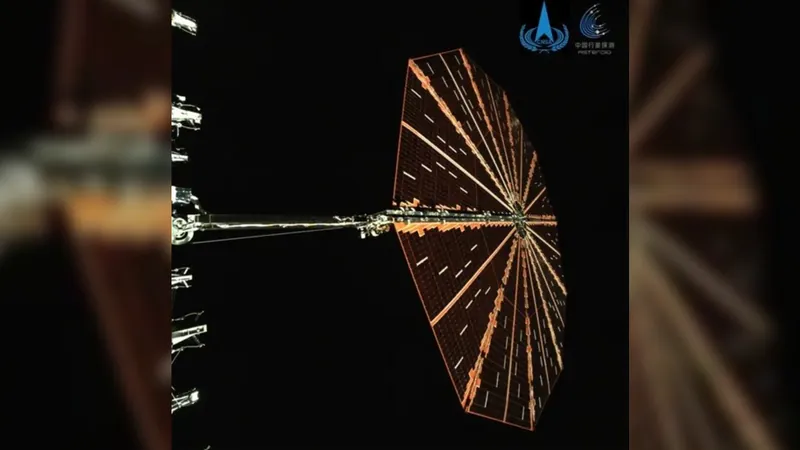
China's Enigmatic 'Quasi Moon' Spacecraft: A Groundbreaking Mission Unveiled!
2025-06-10
Author: John Tan
In a stunning revelation, Chinese authorities have unveiled the first-ever image of the Tianwen 2 spacecraft, just weeks after its covert launch into space. This mysterious probe bears a remarkable resemblance to NASA's current missions and is set to embark on a groundbreaking journey to collect samples from one of Earth's elusive "quasi-moons" next year.
Launch Secrets and Mission Goals
Launched on May 29 aboard a Long March 3B rocket from the Xichang spaceport, the Tianwen 2 probe lifted off in the early hours at approximately 1:31 a.m. local time. Its ambitious mission includes a close encounter with asteroid 2016 HO3, known as Kamo'oalewa, scheduled for July 2026. This encounter promises to be historic as the probe aims to land on the Ferris wheel-sized asteroid, gathering precious samples to eventually return to Earth.
The Enigmatic Kamo'oalewa
Kamo'oalewa translates to "oscillating celestial object" in Hawaiian and is classified as a quasi-satellite of Earth. This means it orbits the sun in tandem with our planet, occasionally circling it, yet it is not gravitationally bound to Earth. One day, it will drift away into the cosmos. Measuring between 130 and 330 feet wide, it’s thought to be a remnant of Earth's very own moon, dislodged by a meteor impact eons ago.
A Glimpse into Cosmic Ambitions
What’s particularly intriguing is how closely Tianwen 2 resembles NASA’s Lucy spacecraft, boasting unique decagonal solar panels. This is a departure from its predecessor, Tianwen 1, which ushered the Zhurong Mars rover to the Red Planet with rectangular panels. The secrecy surrounding Tianwen 2 has added to the excitement; the Chinese National Space Administration (CNSA) announced its successful lift-off an hour after it occurred, without live coverage. Now, the probe is reportedly around 1.9 million miles from Earth, sending back its stunning first photo—a solar panel gleaming in the depths of space.
Future Plans and Discoveries Await!
If all goes according to plan, Tianwen 2 will drop its samples back to Earth during a breathtaking close flyby in late 2027, reminiscent of the recent OSIRIS-REx mission that successfully returned asteroid samples last year. Once its primary mission concludes, Tianwen 2 will embark on a secondary adventure to explore 311P/PanSTARRS, a comet-asteroid hybrid in the asteroid belt, expected around 2035.
Earth's Quasi-Moon Belongings
Earth is home to six known quasi-moons, which orbit the sun alongside us but aren’t bound to our gravitational pull. Interestingly, these space rocks have earned the nickname "minimoons"—a designation typically reserved for temporary orbiters that hover closer for shorter periods. Among these, the asteroid 2024 PT5 made headlines when it became a minimoon for three months after its discovery in September 2024.
As the Tianwen 2 mission unfolds, it paves the way for incredible discoveries not just about our solar system, but potentially about our place in the cosmos!


 Brasil (PT)
Brasil (PT)
 Canada (EN)
Canada (EN)
 Chile (ES)
Chile (ES)
 Česko (CS)
Česko (CS)
 대한민국 (KO)
대한민국 (KO)
 España (ES)
España (ES)
 France (FR)
France (FR)
 Hong Kong (EN)
Hong Kong (EN)
 Italia (IT)
Italia (IT)
 日本 (JA)
日本 (JA)
 Magyarország (HU)
Magyarország (HU)
 Norge (NO)
Norge (NO)
 Polska (PL)
Polska (PL)
 Schweiz (DE)
Schweiz (DE)
 Singapore (EN)
Singapore (EN)
 Sverige (SV)
Sverige (SV)
 Suomi (FI)
Suomi (FI)
 Türkiye (TR)
Türkiye (TR)
 الإمارات العربية المتحدة (AR)
الإمارات العربية المتحدة (AR)